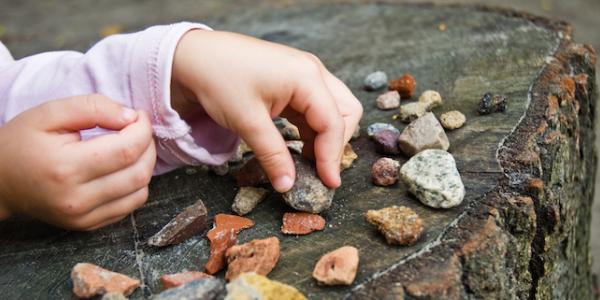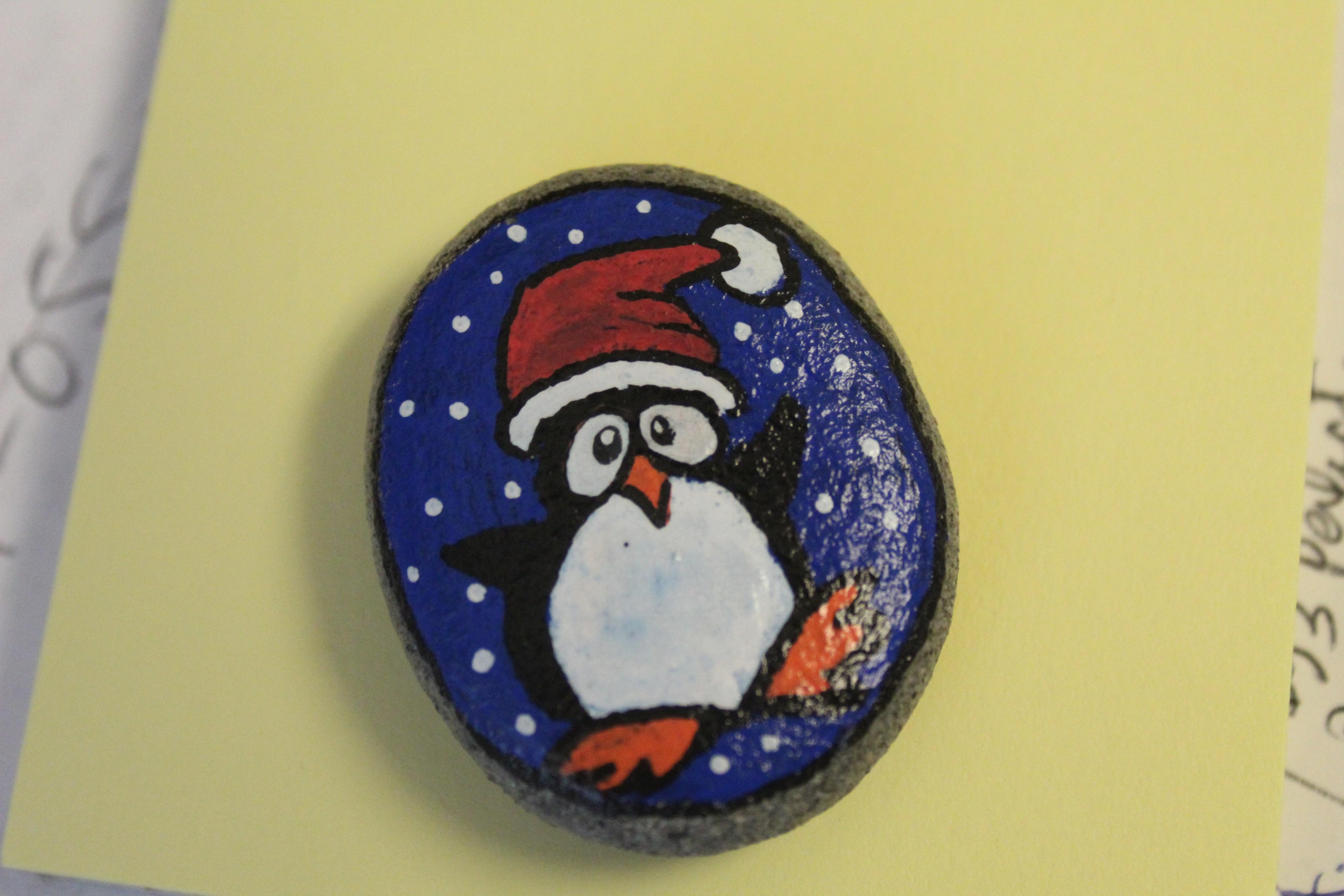Spotlight on Games—Kindness Rocks!

As early childhood educators, we often have stories to tell about our own children as we play and learn with them at home. Here is a story from Julia Luckenbill about her family’s experiences with a rock hiding and finding activity.
My preschooler and I are hard at work hiding and hunting for rocks. This popular game involves finding the perfect rock, decorating it with words or images (or both), and then hiding it very obviously in a park, in a parking lot, or near a public place (like a hospital or school) to bring joy to the finder. Finding hidden rocks is exciting; if we are lucky, someone posts a clue about where rocks are hidden, and we rush over, hoping to add one to our collection.
All this fuss for painted rocks?
To my daughter, they are treasures—ones she can help create. And through playing games like hiding rocks, she learns a great deal:
-
She’s learning to focus and to notice details. She is using her executive function skills as she hunts for rocks on the playground and in the trees.
-
She's using her large muscles to climb around, balance, and reach for the treasures.
-
She is learning to read as she deciphers the words on the rocks she finds.
-
 It's sometimes disappointing when there are no rocks to be found, and learning to cope with this feeling is an important skill for her to practice.
It's sometimes disappointing when there are no rocks to be found, and learning to cope with this feeling is an important skill for her to practice.
-
She's learning to play fairly and take turns—to either leave some rocks for other kids or to replace them with rocks of her own so that the next child finds some too.
-
The rocks she takes home become characters in her stories, and she expands her language skills as she makes up plot lines for them.
-
She uses early math as she sorts and groups the rocks in piles.
-
When she makes rocks for hiding, she is learning to draw symbols using her fine motor skills; refining her grip on the pen or brush.
-
She's also learning hand-eye coordination—it's hard to draw on a curved surface.
-
As she decides which rocks to hide, she is regulating her emotions, being generous, and resisting the impulse to keep them all.
- She's also planning as she decides where to hide them, and thinking about others' perspectives as she reflects on where to hide them—not too easy, not too hard.
Every once in a while, we get lucky and meet another child playing rock hiding at the same time. The two children run together, showing each other their hiding places, helping each other find the hidden treasure, feeling gleeful at the shared goal. Each child leaves with a pile of colorful new rocks to add to their collections or re-hide.
Child's play? Perhaps. But with each rock my daughter collects, she is building skills for life.
This information has been adapted from The Kindness Rocks Project, which encourages people to leave rocks painted with inspiring messages along the path of life.
Looking for more ways to incorporate this activity into your child’s life? Check out YoloRocks and UC Davis Rocks.
Julia Luckenbill is the director of Davis Parent Nursery School’s Danbury site and an adult educator with the Davis Joint Unified School District. She is retired from her work as a full-time lecturer and program coordinator at the Center for Child and Family Studies Laboratory School and is enjoying afternoons with her daughter.